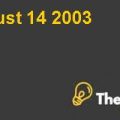
Opportunities
The organization had several opportunities such as expanding itself to other countries that would help to grow and gain a competitive advantage over its competitor. Other opportunity was to enter the wine and other diversified products keeping in mind the health disadvantages caused by the beer. Another opportunity that lies ahead of Asahi was to acquire different beer manufacturing firms to hold command on the market share in the industry. Several unknown segments were to be found by the beer industry that would give the organization significant competitive advantage over the customers.
Threats
New entrants as well as old competitors in the market pose a considerable amount of threat for the organization if the market capitalization of the super dry segment is neglected. The position enjoyed by the organization was not imminent and the company needed to innovate in their business operations to prosper. There will be a definite price war in the future; therefore the organization must differentiate itself on a certain ground from its competitors. Innovation and technological enhancements were evident but will surely have an impact in the future on the organization.
Company:
The company analysis shows the movement of the firm towards its desired goals to achieve its core mission.
Goals and objectives: the main goal for Asahi is to become the industry leader in the super dry and draft beer products. Currently Asahi has the first mover advantage in the super dry product category and has made significant progress in the draft beer segment. The marketing and advertisements category need a substantial increase in the overall aspect such as better staff who can achieve results efficiently. Currently under the new CEO the advertisement of the product category received substantial financial help to achieve its current organization performance.
Customers:
Asahi has worked very hard for the acquisition of market share by working on the brand image and advertisement. Asahi had the same customer base of Kirin as the shift in generation was resulting in the swinging of preferences. Asahi changed the packaging of the product and recalled the total production that it had pushed in the market and worked closely with the distribution channels to penetrate the market. The customers were very conservative in the post war era and it took 30 years to introduce diversity in the product category of the firm. However, the preferences will keep on changing in the coming years due to the dynamic nature of the business and social activities.
Collaborators:
Collaborators were not present in large numbers at that time however; they did have an effect on the business activities of the firm. Asahi faced an uphill task to collaborate with the suppliers as their competitor and the market leader had a significant influence over them. But later this problem was overcome by a persistent increase in the production and the quality level which forced the distributors to incline towards other beer manufacturers.
Climate:
Several factors were also responsible for the downfall of other beer manufacturers. Such as the obtaining of license of the products was difficult as the government would reject the license if the organization had the excess capacity to cater the industry. Cultural environment also played a significant role for firms to realize the fact that the business environments required a new strategy in terms of pricing product diversification and the overall business activities. Technology also helped organizations to prosper as they provided an efficient way to all the business units to work effectively.
Competition:
Asahi had different competitors and they were battling the organization on different turfs that it had to cater.
Kirin was one of the two companies that were operating in Japan before the war. It was the largest and the most diversified manufacturer of beer in the industry and had an extensive nationwide distribution channel. Kirin was slow to respond to the dry beer segment which it considered a fad which was the reason of its low market share in the category.
Sapporo was the result of the breaking down of Dai Nippon into two companies that also gave birth to Asahi Ltd. Sapporo’s strength in the industry was its command in the draft beer segment of the industry and probably the closest competitor to Asahi with a market share of 18.8 percent. It also followed the suit and introduced its dry beer product to gain advantage from the new discovered segment........................................
This is just a sample partial case solution. Please place the order on the website to order your own originally done case solution.













